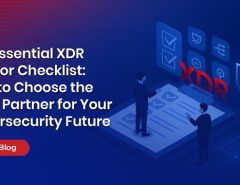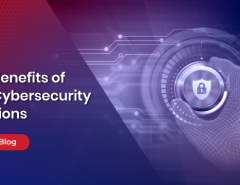With an ever-growing attack surface in a hyper-connected digital world, there has never been a more critical time to secure the future. With access to tools like ChatGPT and more personalized spear-phishing attacks, hackers are always one step ahead, and it’s becoming increasingly difficult to detect and prevent attacks.
Getting in front of adversaries by adopting a prevention-first strategy for early detection will allow organizations to stop disruptive attacks before they can cause damage. Today’s security resilience calls for more than the traditional siloed approach. It’s time for a more holistic protection against cyberattacks, unauthorized access, and misuse with XDR – Extended detection and response solution.
Why is XDR Important for Security Operations Modernization?
If you are looking for better visibility, accuracy, and prioritization across networks, devices, endpoints, clouds, and identities — rather than just one aspect of the infrastructure – XDR is a game changer.
Today, many organizations rely on siloed security tools to identify and mitigate threats. This adversely affects their environments as their visibility gaps widen, and triage and remediation workflows ebb in efficiency.
Designed to give organizations a holistic view of the cybersecurity posture and IT environment, XDR is an evolution of EDR that unlocks value across your entire security ecosystem. An advanced XDR solution collects, correlates, and analyzes security data from various sources to deliver actionable insights, increase visibility and situational awareness, accelerate detection and response, and reduce operational costs and complexity.
This helps organizations eliminate traditional tools’ inherent inefficiencies and vulnerabilities and contain and remediate sophisticated attacks — faster and more efficiently. The best way to explain the real-world benefits of XDR is to look at how the functionality can help organizations in their daily IT operations and threat-hunting capabilities. Let’s explore some interesting XDR use cases that show its effectiveness and efficiency.
Top 3 XDR use cases
- Playbooks and Connectors for automated actions/remediation
XDR collects and automatically correlates data across multiple security layers, correlating the kill chain, and enabling applications and dashboards to analyze incidents, thus creating a unified cybersecurity view.
It then enhances the incident response by correlating alerts, accelerating response time, and limiting impact scope. Its playbooks automate diverse actions, simplifying assessment and remediation without extra integrations. Easy to deploy, XDR playbooks efficiently decrease the time analysts dedicate to remediating incidents.
- Enhanced threat detection using advanced analytics
Siloed security tools can slow down threat-hunting and mitigation efforts, making it challenging to identify incident insights, as seen in the Log4J vulnerability and related attacks.
XDR can quickly determine massive breaches, understand their impact, and respond promptly. It uses advanced security analytics to analyze large volumes of data and uncover hidden threats like zero-day and targeted attacks. It then consolidates alerts to efficiently and effectively triage the events through multiple rules based on MITRE attack techniques. The automated threat intelligence capability reduces the time taken to identify threats, increasing the speed and effectiveness of the response.
- Threat Hunting Enrichment
XDR provides unlimited global threat intelligence to face advanced persistent threats (APTs) and targeted attacks fearlessly. It also identifies the patterns of cybercriminals to predict their suspicious activities ahead of their execution. Then, it correlates it against telemetry and security logs to pinpoint the accuracy of immediate and future threats.
Conclusion
With the XDR solution, detect more, act faster, and elevate productivity to achieve security resilience. Introducing SEQRITE HawkkHunt XDR – a simplified solution to efficiently stop the most sophisticated hidden threats and adversaries with unified visibility and powerful analytics.
With the increasing sophistication of the adversary, XDR is the unifying call for the industry to come together and position customers to protect their most critical assets. XDR is a crucial component of embracing security resilience for your business. Talk to our experts today!




